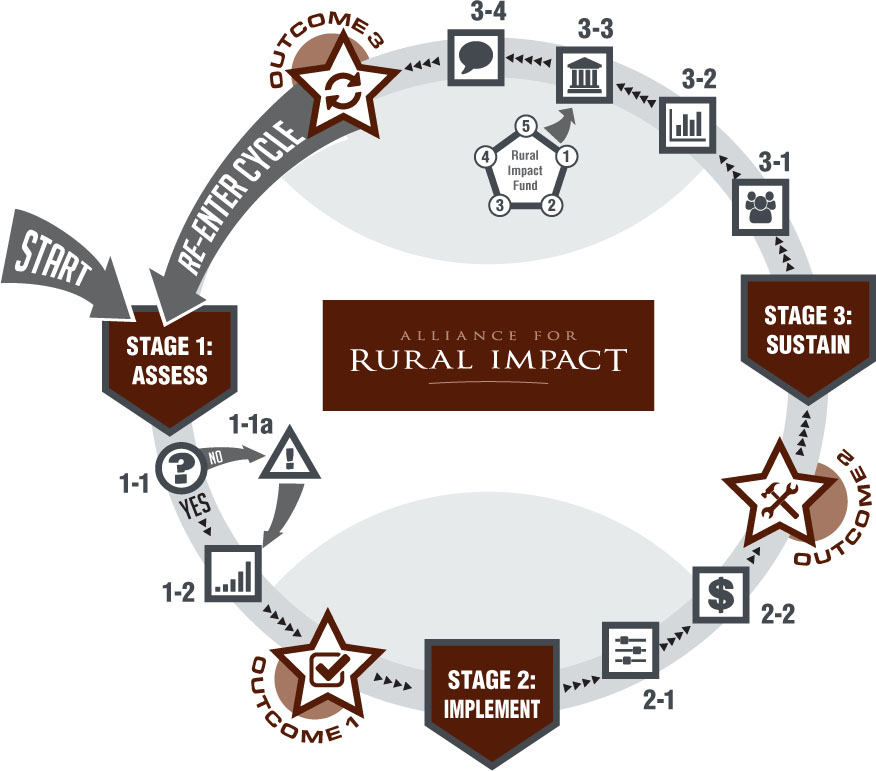The Community Investment Model is designed to fully explore a community’s existing assets and challenges, building an actionable plan that develops strategic projects based upon return-on-investment principles. ARI assists communities in narrowing the focus of typical strategic planning processes, then works collaboratively to find public and private resources for implementation. In order to sustain progress, ARI also helps communities establish the systems for continuing the cycle of planning, analysis, investment and implementation long after the consulting role has ended.
STAGE 1: ASSESS
1-1. EXISTING PLAN?
Does the community have a current strategy with well-defined projects or programs and buy-in from the community at large?
1-1a. STRATEGIC PRIORITIZATION
Identify potential projects and programs for implementation.
1-2. INVESTABILITY ANALYSIS
Identify capacity, resources, partners and markets. Prioritize investment based on potential return.
OUTCOME 1: A PLAN
Actionable, investable, implementable plan supported by the community at large.
STAGE 2: IMPLEMENT
2-1. PROJECT DEVELOPMENT
Putting it together: Initial design and scoping of project or program, including continuous community input cycles and champion development.
2-2. RESOURCE DEVELOPMENT
Funding alignment. Identification of public and private resources specific to each priority, project or program.
OUTCOME 2: IMPLEMENTATION
Project implementation. Projects funded and underway.
STAGE 3: SUSTAIN
3-1. CAPACITY
Organizational development. Education and leadership of community partners. Systemic improvements to support continued progress.
3-2. STRUCTURE
System development. Creation of an integrated partnership between community and economic development organizations, nonprofits, municipalities and citizens.
3-3. LONG-TERM CAPITAL
Local financing. Lending and technical services designed to provide local impact while expanding partnerships with outside investors.
3-4. PROMOTION
Marketing and public relations. A mix of internal and external promotional systems to engage the public and attract interest.
OUTCOME 3: SUSTAINABILITY
Sustained cycle of assessment, project identification, investment readiness and implementation.

